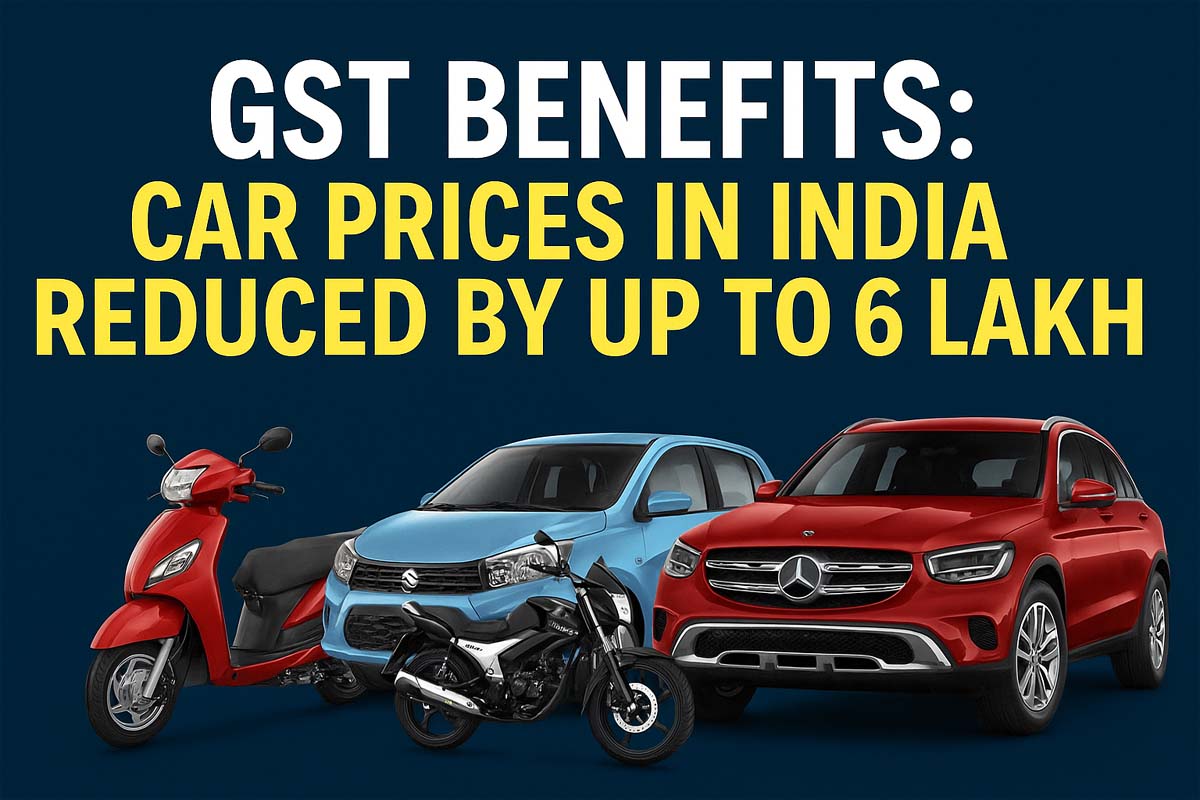The recent GST restructure has brought huge tax benefits for car, bike, and scooter buyers in India. The prices of popular and luxurious vehicles have dropped by up to ₹6 lakh, with reduced GST rates. Even two-wheelers, three-wheelers, and vehicle servicing are now cheaper with the GST Benefits. Let’s break down the benefits and see how much you can save.
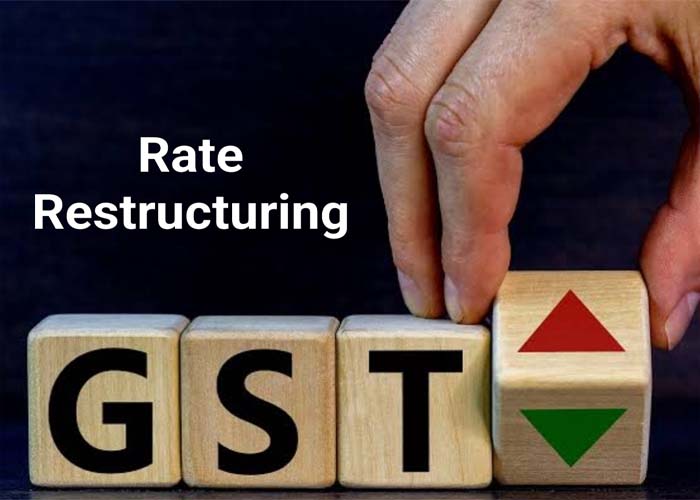
What Changed in GST?
- Previous GST on cars: 29%–31% for sub-4 meter and 43%–50% above 4 meter (GST+Cess)
- New GST after restructure:
- 18% flat for small cars, bikes, scooters, three-wheelers, and servicing.
- 40% flat for bigger cars and luxury SUVs (previously 43–50% including GST+Cess)
This tax reform encourage new buyers by creating a huge savings.
GST Benefits for Sub-4 Meter Cars
Eligibility Condition
To qualify for the 18% GST benefit, the car length must be 4 meters or less,. The benefit will applicable on 1.2L or below petrol engine and 1.5L or below diesel engine.
Popular Models That Qualify
- Maruti Suzuki: Alto, Celerio, WagonR, Swift, Dzire, Baleno
- Tata: Punch, Altroz, Nexon
- Mahindra: XUV300
- Hyundai: Venue, i10, i20
- Kia: Sonet
- Honda: Amaze
- Citroën: C3
If your budget was ₹10–15 lakh, you can now save ₹1–1.5 lakh on these cars for the GST reform.
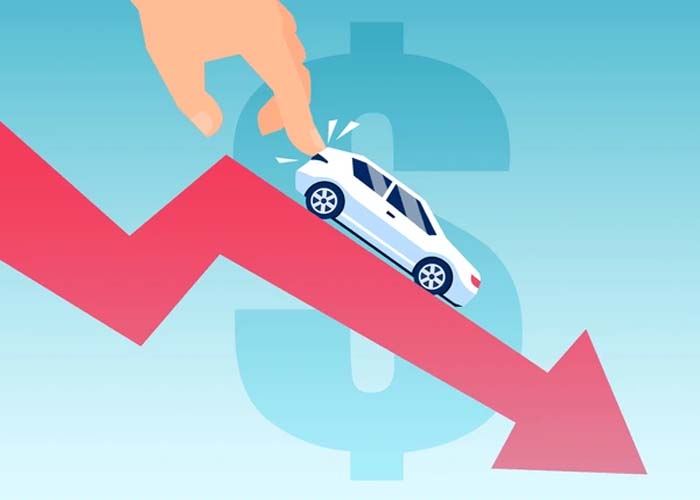
GST Benefits for Larger Cars & SUVs
Eligibility Condition
To qualify for the 40% GST benefit, the car length must be above 4 meters,. The benefit will applicable on above 1.2L petrol engine or above 1.5L diesel engine.
Cars That Fall in This Category
- Hyundai Creta, Kia Seltos
- Skoda Kushaq, VW Taigun
- Maruti Grand Vitara, Toyota Hyryder
- Toyota Fortuner
- Mahindra XUV700, Tata Safari
- Premium & Luxury cars – Mercedes, BMW, Audi
Tax Comparison
| Car Type | Old GST Slab | New GST Slab | Benefit |
|---|---|---|---|
| Mid-size SUV (Creta, Seltos) | 43–45% | 40% | ₹80k–1.5L |
| XUV700 / Safari | 50% | 40% | ₹1.5–2L |
| Fortuner (GR Sport) | 50% | 40% | ₹5–6L |
| Luxury Cars (BMW, Audi) | 50% | 40% | Several Lakh+ |
Buying a Toyota Fortuner GR Sport (₹60–63 lakh) now gives you a ₹5–6 lakh tax saving based on your state.
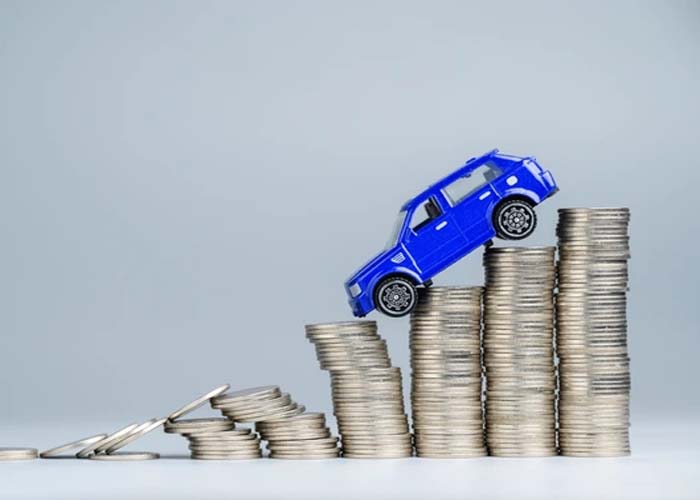
GST Benefits for Two-Wheelers
- Below 350cc bikes & scooters → GST reduced from 28% to 18% (GST+Cess)
- Examples: Splendor, Activa, Passion, Pulsar, Apache, Jupiter, TVS Ntorq 150, Pleasure, Royal Enfield Classic 350.
- Above 350cc bikes → GST increased from 31% to 40% (GST+Cess)
- Example: Royal Enfield Himalayan 450, Harley-Davidson models.
This is a great news for daily commuters, but premium bike enthusiasts may face a setback due to increase a huge amount.
GST Benefits for Three-Wheelers, Trucks & Buses
- Three-wheelers: Flat 18% GST.
- Trucks & Buses: Flat 18% GST
This will help transport sector to gains affordability.
GST Benefits on Car Servicing & Spare Parts
- Earlier, servicing cost varied by parts as different parts were charged under different GST slabs.
- Now, flat 18% GST on all service and spare parts.
- Even luxury cars enjoy reduced servicing bills under the new regime.
How This Impacts the Automobile Market
- Increased demand– GST 2.0 encourage new buyers to purchase car under sub 4 meter.
- Luxury buyers save more– The reduction of price and servicing cost can encourage a premium buyer.
- Two-wheeler sales– Tax reform may increase sales sharply in rural and urban areas.
- Public transport costs drop– GST benefit can support businesses and logistics to reduce charges.
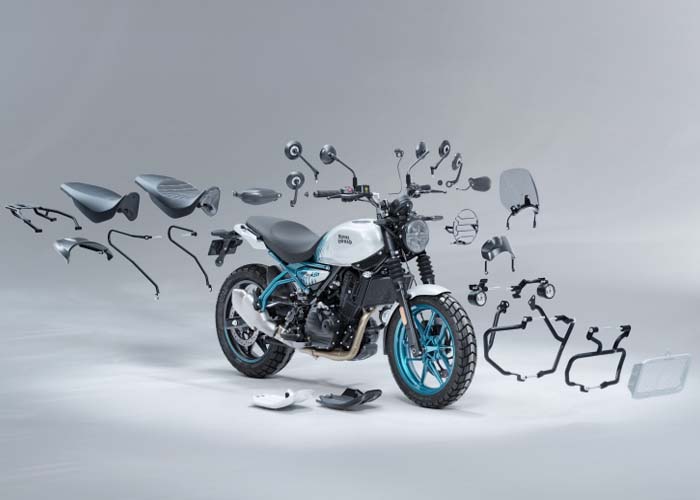
Conclusion
The GST restructure is a turning point for India’s automobile sector. From small hatchbacks to premium SUVs, or from scooters to trucks, every segment will gain some benefit after 22nd September 2025.
However, one major step still remains- bringing petrol and diesel under GST. With current VAT rates, we are paying around 40%, including fuel. The GST rule could provide huge relief to the public. Also, for E20 ethanol-blended fuel, a price reduction is needed to make eco-friendly transport affordable.
Read more: E20 Fuel Compatible Cars in India: Full List, Benefits & Challenges
Maruti Suzuki Victoris 2025 Launched: First SUV With Level 2 ADAS
Hyundai Creta Knight King Limited Edition 2025
FAQ Section
Q1. Which cars get the highest GST benefit?
Luxury cars and SUVs like Toyota Fortuner, XUV700, and premium brands (BMW, Audi) get savings of ₹1.5–6 lakh.
Q2. What is the new GST rate on small cars in India?
18% for sub-4 meter cars with engines up to 1.2L (petrol) or 1.5L (diesel).
Q3. Are two-wheeler prices reduced after GST change?
Yes, bikes and scooters under 350cc now have 18% GST, making them cheaper.
Q4. Will GST on petrol and diesel be reduced too?
Currently, fuels are outside GST. Experts suggest including them under GST to lower petrol-diesel prices

